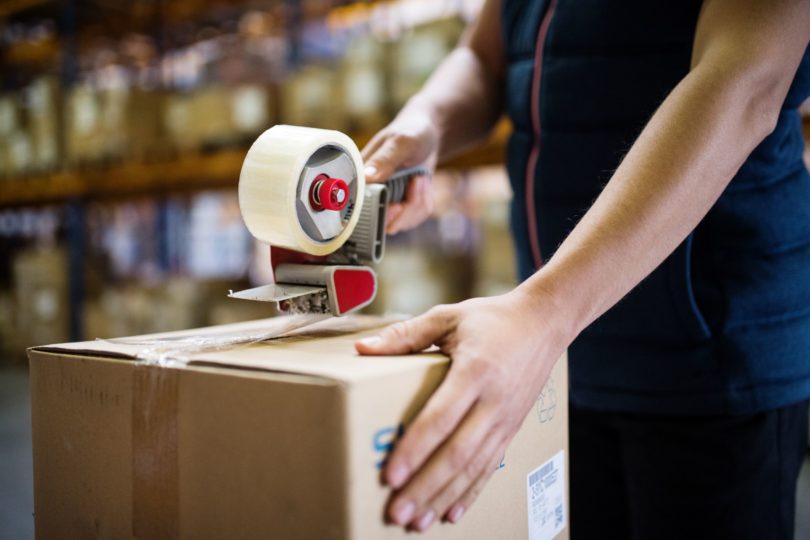No one wants to wait for their package for days only to find out upon delivery that the parcel is broken or damaged. If that happens to one of your customers, there’s a good chance that they will no longer purchase from your business.
Unfortunately, if your business relies on a third-party service provider for its delivery needs, chances are you cannot control how they handle their deliverables. But whilst that might be the case, there are other ways to solve this issue. One particular way is by improving your packaging.
Proper packaging can provide your parcels with maximum protection, thereby minimising the chances of damaged goods. If you plan on doing just that, below are five tips to get you started.
- Make Use of Rigid Boxes
There are several types of business packaging supplies, and each type varies in protection, cost, and weight. The most common types of packaging are:
Folding Cartons
Cartons are perhaps the cheapest packaging available to you. It is made from thin paper, like the type you will often find when buying a box of cereal from the supermarket.
Corrugated Boxes
Corrugated boxes, also known as cardboard boxes, are stronger than folding cartons. They are often used by people when moving in or out of a house. While they are not as cheap as cartons, they are certainly more durable.
Rigid Boxes
Rigid boxes are among the sturdiest and toughest packaging you can use for your goods. This is why companies often use them for high-end products like phones or shoes. This type of packaging is made of chipboard and is the thickest paper out of the three. Take note that chipboards can be quite costly.
Since your goal is to make sure goods remain safe and secure during shipping, you might want to consider using rigid boxes for packaging. However, budget constraints may play a role in the packaging you ultimately choose to use.
- Place Moisture-Absorbing Objects Inside the Container
If the package contains goods that are susceptible to humidity, it is advisable to put a moisture-absorbing object inside the container. Examples of such things include silica gel packets and small dehumidifier bags. These will absorb the moisture in the air to ensure that the interior does not become too humid, as it often damages goods like food, clothing, and medications.
- Insert Padding on the Box Walls
In the world of packaging, it is a common practice to prevent the contents of a package from touching, much less hitting, the box’s interior walls. This is especially true for chipboards as it most likely would lead to shattering if contact were to take place. And for that reason, you should add padding inside the container to absorb the impact. Examples of padding include:
Bubble Wrap
Bubble wrap is one of the most commonly-used paddings in packaging, and for good reason. One, the bubbles of sealed air can serve as a durable cushion against impact. Two, it’s exceptionally lightweight, which is perfect for packaging. And three, it is relatively cheap compared to other options.
Foam Peanuts
While not as popular as bubble wrap, foam peanuts are also standard padding for packages. Similar to bubble wrap, they are light and can reduce impact considerably. The only problem with them is the static shock hazard. Foam is typically made of polystyrene, which creates a static charge when rubbed against each other.
Kraft Paper
Apart from being an excellent material for the box, kraft paper can also serve as padding if you add several layers into a parcel. It may not be as soft, but it is still a viable and cost effective option.
Void or Gap Filling Air Cushion Bags
Air bags fill the empty space in a container, preventing items from moving around during transit. Although an air bag making machine may be a relatively expensive purchase at first, this packaging solution will be worth it for protecting your goods!
Before shipping your items, test to see whether they will be safe on their journey by shaking the carton. If you shake your package and still feel considerable movement inside the box, there’s a good chance the padding is insufficient.
Padding is also extremely helpful if you plan on packaging several units inside one container, as it will reduce the possibility of the items hitting each other.
- Take Your Time Selecting a Packing Tape
Taping a package is one of the essential steps of the packaging process as it not only holds the package together but it also prevents dust and dirt from entering the container. That’s why you must take your time selecting a packing tape
Here is a list of available options:
- Transparent/scotch tape
- Duct tape
- Filament tape
- Electrical tape
- Masking tape
- Parcel tape
While it may be tempting to make use of scotch or duct tapes due to their low price, it is usually not a good idea. Your likely best bet is to use parcel tape, as it is relatively strong and not too expensive.
- Ship Items After Disassembling Them
If your goods are made of multiple parts, consider disassembling the item and separating each piece within one or multiple containers. This usually applies to larger items such as tables, but also mechanical toys or By doing so, you can minimise any damage that can result from excessive shaking.
Make sure each part is packaged neatly – customers will notice and appreciate the time and care you put into your packaging!
Wrapping Up
Packaging is often overlooked by business owners, but in reality, it is an incredibly important and oftentimes complex process. If the protection is insufficient, there is a good chance the goods will sustain considerable damage, which often turns away buyers. Hopefully, with this guide, you should be able to improve your packaging and impress your customers!
“The opinions expressed by BizWitty Contributors are their own, not those of BizCover and should not be relied upon in place of appropriate professional advice. Please read our full disclaimer."







